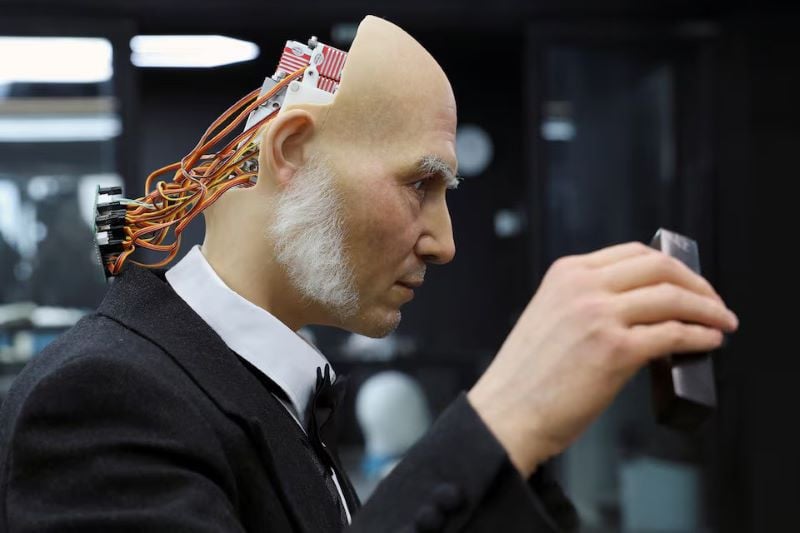SAN FRANCISCO: At the Ex-Robots factory in Dalian, China’s northeastern coastal city, engineers are developing advanced humanoid robots with a focus on enhancing facial expressions and emotions.
In the factory, neck-length silicone masks lie on a table alongside silicone arms and feet, while disembodied heads are displayed and humanoid robots in various stages of construction stand nearby. Drawings of robot designs adorn the walls.
“We have our own software and algorithm teams,” said Ex-Robots Chief Executive Li Boyang, emphasizing that humanoid robots are the most complex class of robotic products. “There are many basic models and algorithms that are commonly open source, which everyone uses. However, we concentrate more on enabling the AI to recognize and express expressions and emotions.”
A demonstration showed an Ex-Robots worker moving her head, smiling, and sticking out her tongue, with a humanoid robot mimicking her movements through tiny motors installed in its head.
“We are also working on the foundation model. The model we’re making is multi-modal and capable of emotional expression. It can perceive the surrounding environment and produce appropriate facial feedback,” Li explained.
Ex-Robots stated that producing a humanoid robot takes from two weeks to a month, with prices ranging from 1.5 million yuan ($207,000) to 2 million yuan.
Currently, the primary purpose of Ex-Robots’ creations is for display in museums, one of which is housed in the same building as their factory. Looking ahead, Li sees a broader role for humanoid robots in the healthcare and education industries.
“Psychological counseling and health are certainly future application scenarios. We are conducting related research, such as auxiliary treatment and preliminary screening for emotional and psychological disorders,” he said. “Moreover, I believe that emotional interaction has broader applications in service fields, such as those aimed at children.”
